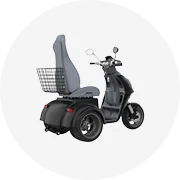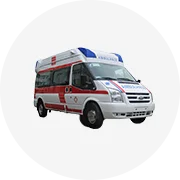Types of Mini Tow Trucks
Mini tow trucks, also known as light-duty tow trucks, are essential in the towing and roadside assistance industry. They are designed to be compact and versatile, making them suitable for various towing tasks, especially in urban areas with limited space. Below are the most common types available in today's market:
Wheel Lift Tow Trucks
Wheel lift tow trucks are the most common type of mini tow trucks. They use a hydraulic lift at the rear to raise one set of wheels off the ground.
Best for: Light-duty towing tasks in urban environments, parking lot recovery, and vehicles stuck in traffic.
Key advantage: Reduces wear and tear by preventing contact between the towed vehicle and road surface.
Flatbed Tow Trucks
Flatbed tow trucks feature a bed that can be inclined to ground level, allowing easy loading and unloading of vehicles.
Best for: Vehicles with low clearance, damaged vehicles, and roadside assistance services requiring damage-free transport.
Key advantage: Complete vehicle protection with no components touching the ground during transport.
Integrated Tow Trucks
Also known as combo trucks, these versatile vehicles combine features of wheel-lift and flatbed trucks with a bed that can be raised to lift under the towed vehicle's wheels.
Best for: Towing companies handling diverse recovery scenarios from light to medium-duty applications.
Key advantage: Versatility to handle multiple towing situations with a single vehicle.
Rotator Tow Trucks
Designed for heavy-duty towing tasks, rotator trucks are equipped with a rotating crane that can lift and rotate vehicles.
Best for: Recovering overturned vehicles, towing large trucks and buses.
Key advantage: Superior lifting capacity and precision positioning for complex recovery situations.
Motorcycle Tow Trucks
Specialized mini tow trucks designed specifically for transporting motorcycles safely with dedicated securing equipment.
Best for: Motorcycle roadside assistance, breakdown recovery, and accident transport.
Key advantage: Specialized features ensure safe transport without damage to valuable motorcycles.
| Truck Type | Towing Capacity | Best Applications | Key Advantages |
|---|---|---|---|
| Wheel Lift | 3,000-7,000 lbs | Urban towing, parking enforcement | Compact, maneuverable, cost-effective |
| Flatbed | 7,000-12,000 lbs | Luxury cars, damaged vehicles | Complete vehicle protection, versatility |
| Integrated | 5,000-10,000 lbs | All-purpose towing services | Versatility, operational flexibility |
| Mini Rotator | 10,000-20,000 lbs | Heavy-duty recovery operations | Superior lifting power, precision control |
| Motorcycle | 1,000-2,500 lbs | Motorcycle transport services | Specialized securing systems, protective transport |
Expert Tip: When selecting a mini tow truck type, consider not only your immediate needs but also potential future service expansion. Many towing businesses find integrated models provide the best long-term value due to their versatility.
Specifications and Maintenance of Mini Tow Trucks
Proper maintenance is crucial for ensuring the reliability, safety, and longevity of your mini tow truck. Below are the key components that require regular attention and maintenance protocols:
Engine Performance
Mini tow truck engines are specifically designed to generate sufficient power for towing operations while maintaining fuel efficiency. Regular engine maintenance is essential for optimal performance.
- Schedule oil changes every 3,000-5,000 miles depending on usage intensity
- Check and replace air filters every 15,000 miles or when visibly dirty
- Inspect for fluid leaks (oil, coolant, transmission fluid) weekly
- Monitor engine temperature during towing operations to prevent overheating
Towing Capacity Management
Each mini tow truck has a specified maximum towing capacity determined by its engine power, transmission durability, and chassis strength. Exceeding this capacity is dangerous and can cause permanent damage.
- Maintain documentation of the truck's official towing capacity ratings
- Train operators to accurately estimate vehicle weights before towing
- Inspect suspension components monthly for signs of stress or fatigue
- Consider upgrading towing systems if consistently operating near maximum capacity
| Component | Maintenance Task | Frequency | Warning Signs |
|---|---|---|---|
| Hydraulic System | Check fluid levels and inspect for leaks | Weekly | Slow operation, unusual noises, visible leaks |
| Tires | Check pressure, inspect tread, rotate | Weekly/5,000 miles | Uneven wear, bulges, insufficient tread depth |
| Brakes | Inspect pads, rotors, and fluid levels | Monthly | Squealing, reduced stopping power, pedal pulsation |
| Frame/Chassis | Inspect for cracks, rust, damaged welds | Quarterly | Visible cracks, excessive rust, alignment issues |
| Electrical System | Check connections, lights, winch operation | Monthly | Dim lights, intermittent operation, corrosion |
Truck Bed and Lifting Mechanism
The hydraulic lifting system and bed surface integrity are critical components that directly impact a mini tow truck's functionality and safety.
- Inspect hydraulic fluid levels and quality monthly
- Test lift controls for smooth, consistent operation
- Check for hydraulic leaks around cylinders, hoses, and connections
- Examine bed surface for damage that could compromise vehicle security
- Lubricate all moving parts according to manufacturer specifications
Safety Warning: Never perform maintenance on hydraulic systems while under pressure. Always relieve pressure according to manufacturer guidelines before servicing any hydraulic components to prevent serious injury.
How to Choose Mini Tow Trucks
Selecting the right mini tow truck requires careful consideration of several factors to ensure it meets your specific operational requirements and provides reliable service. Below are the key criteria to evaluate:
Towing Capacity
The maximum weight a mini tow truck can safely handle is its most critical specification. Capacity typically ranges from 3,000 to 10,000+ pounds depending on the model.
Selection tip: Choose a truck with at least 20% more capacity than your heaviest anticipated load to provide a safety margin and account for varied towing conditions.
Size and Maneuverability
Mini tow trucks excel in urban environments where standard tow trucks struggle to navigate. Consider turning radius, overall length, and height clearance requirements.
Selection tip: If operating primarily in congested areas or parking garages, prioritize models with the smallest footprint that still meet your capacity needs.
Truck Type Suitability
Each tow truck design (wheel lift, flatbed, integrated) offers specific advantages for different towing scenarios and vehicle types.
Selection tip: For versatile operations, integrated models offer the best balance, while specialized services may benefit from purpose-built designs.
Fuel Efficiency
Operating costs are significantly impacted by fuel consumption, especially for high-mileage towing operations.
Selection tip: Compare fuel ratings across models and consider diesel options for higher torque and potentially better long-term economy.
Safety Features
Modern mini tow trucks include various safety systems to protect operators, towed vehicles, and other road users.
Selection tip: Prioritize models with backup cameras, stability control, advanced braking systems, and proper lighting/reflectors for visibility.
Cost Considerations
Initial purchase price is just one component of the total cost of ownership for a mini tow truck.
Selection tip: Calculate long-term value by factoring in maintenance requirements, fuel economy, resale value, and warranty coverage.
| Selection Factor | Importance Level | Evaluation Criteria |
|---|---|---|
| Towing Capacity | Critical | Maximum weight capacity, GVWR rating, rear axle rating |
| Truck Configuration | High | Wheel lift, flatbed, or integrated design based on service needs |
| Build Quality | High | Frame construction, hydraulic system quality, component durability |
| Safety Features | Critical | Braking systems, stability control, lighting, operator safety features |
| Maintenance Access | Medium | Ease of service, parts availability, diagnostic systems |
| Cost of Ownership | High | Purchase price, operational costs, maintenance expenses, resale value |
Purchasing Advice: Before making a final decision, test drive multiple models and speak with current owners of the same equipment. Real-world feedback often reveals practical considerations that specifications alone don't capture.
DIY Repair and Replacement for Mini Tow Trucks
While professional servicing is recommended for major issues, many mini tow truck repairs can be performed with proper tools, safety precautions, and mechanical knowledge. Follow this structured approach to troubleshoot and repair common problems:
Step 1: Identify the Problem
Accurate diagnosis is crucial before attempting any repair work on your mini tow truck:
- Document all symptoms (unusual sounds, performance issues, warning lights)
- Use the truck's diagnostic system if available
- Consult the service manual for troubleshooting procedures specific to your model
- Check for technical service bulletins that might indicate known issues
Step 2: Prepare for Repair
Before beginning any work, ensure you have everything needed:
- Park on level, stable ground with adequate workspace
- Gather all required tools and replacement parts
- Secure proper safety equipment (gloves, eye protection, jack stands)
- Disconnect the battery if working on electrical components
- Reference repair manuals or technical documentation for your specific model
Step 3: Accessing Components
Many repairs require disassembly to access internal components:
- Follow the service manual's disassembly sequence precisely
- Label and organize all parts and fasteners during removal
- Take photos of complex assemblies before disassembly
- Use proper tools to avoid damaging components or fasteners
- Protect exposed systems from dirt and debris during the repair process
Step 4: Component Repair or Replacement
Once the damaged component is accessible:
- Compare the damaged part with the replacement to ensure compatibility
- Clean mounting surfaces thoroughly before installing new components
- Apply appropriate lubricants or thread-locking compounds as specified
- Torque all fasteners to manufacturer specifications
- Replace any gaskets, seals, or O-rings that were disturbed during repair
Step 5: Reassembly and Testing
After completing the repair:
- Reassemble components in the reverse order of disassembly
- Verify all connections, hoses, and electrical connectors are secure
- Refill any fluids that were drained during the repair process
- Perform a static test of the repaired system before operational testing
- Test the truck's operation thoroughly, starting with low-stress conditions
Safety Warning: Never work under a tow truck supported only by a hydraulic jack. Always use jack stands rated for the vehicle's weight. For hydraulic system repairs, always relieve pressure before disconnecting any components.
Maintenance Tip: Create a dedicated maintenance log for your mini tow truck to track all repairs, part replacements, and service intervals. This documentation is invaluable for troubleshooting recurring issues and maintaining optimal performance.
Frequently Asked Questions
In most states, a standard driver's license is sufficient to operate a mini tow truck. However, requirements vary by location and truck size. Some jurisdictions may require:
- Commercial Driver's License (CDL) for trucks exceeding certain weight limits
- Special towing endorsements or certifications
- Business licenses for commercial towing operations
Always check with your local Department of Motor Vehicles and transportation authorities for specific requirements in your area.
Yes, mini tow trucks can be used for long-distance towing, but several factors should be considered:
- Ensure the truck's towing capacity exceeds the vehicle's weight by at least 20%
- Verify cooling systems are in excellent condition to prevent overheating
- Use proper securing equipment (safety chains, straps) for extended travel
- Plan for more frequent rest stops to check connections and vehicle condition
- Consider fuel efficiency and range when planning long routes
For very long distances, a dedicated car carrier service might be more economical when factoring in fuel costs, wear and tear, and operator time.
Not all mini tow trucks come with four-wheel drive capabilities. The drive configuration depends on the manufacturer and model:
- Many basic models feature rear-wheel drive for cost efficiency
- Premium models often offer four-wheel drive options
- Some manufacturers provide switchable systems (2WD/4WD)
Four-wheel drive provides significant advantages in adverse weather conditions, off-road recovery operations, or when additional traction is needed for heavy loads. If your towing operations frequently involve these conditions, investing in a 4WD model is recommended.
Mini tow trucks can be used for off-road towing if properly equipped. Key considerations include:
- Four-wheel drive capability is essential for most off-road conditions
- All-terrain or mud tires provide necessary traction
- Increased ground clearance helps navigate uneven terrain
- Skid plates protect vulnerable components from damage
- Winch systems assist with recovery in challenging situations
Purpose-built off-road tow trucks with reinforced frames, upgraded suspension systems, and specialized recovery equipment will perform best in demanding conditions. Standard mini tow trucks may handle light off-road situations but aren't designed for extreme terrain.
Hydraulic fluid should typically be changed every 1,000 operating hours or annually, whichever comes first. However, this can vary based on:
- Manufacturer recommendations for your specific model
- Operating conditions (extreme temperatures accelerate fluid degradation)
- Load intensity (consistently operating near maximum capacity)
- Visible fluid contamination or unusual hydraulic system behavior
Regular fluid analysis can help determine optimal change intervals for your specific operating conditions. Always use the hydraulic fluid type and grade specified by the manufacturer.





































































































































































































































































 浙公网安备 33010002000092号
浙公网安备 33010002000092号 浙B2-20120091-4
浙B2-20120091-4